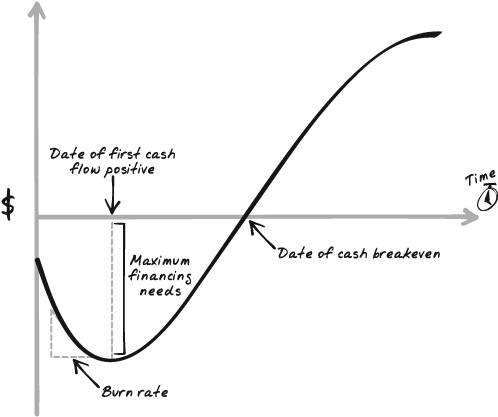Why Discounted Cash Flow Is the Best Value Gauge for FastGrowing Companies
Post on: 15 Август, 2015 No Comment

In early 2009, investors latched on to Netflix (Nasdaq: NFLX ). boosting shares from $25 to $40 in just a few months. The video rental and streaming company had been posting stellar growth, though at the time, its P/E ratio looked awfully high compared to most other stocks. However, many investors were looking well down the road, anticipating continued rapid growth in sales and profits.
Shares have gone on to hit the $200 mark, good for a 1,000% gain in less than four years. Where to from here? Judging the stock by near-term profits just won’t do. Shares trade for more than 50 times projected 2011 profits.
The Present Value of the Future
For many of the company’s bulls, discounted cash flow (DCF) is a much better gauge of Netflix’s value. DCF is a handy way to come up with a current stock price based on profits that will be earned well into the future. The logic is fairly simple. If a company is expected to boost sales and profits at a fast clip, you can determine what those numbers will look like five years from now.
Of course, there’s so much uncertainty in the world that investors need to account for the chance that something may go wrong: a sharp downturn in the economy ; technological changes that make the company obsolete; a bone-headed move by management that takes the company off course; or irrational pricing by competitors. To compensate, investors apply a discount rate to their projected cash flows (or alternatively, a discount to their target cash flow multiple ). Let’s look at Netflix as a specific example.
Netflix has surely become a profit machine. Cash flow has risen from $65 million in 2006 to $192 million in 2009, and will likely top $275 million this year. So the question is, where will cash flow be in five years? Well, Netflix is boosting its customer base and revenues by about 30% annually right now. In a few years that figure is likely to slow as it becomes harder to find new customers.
Let’s assume that growth averages 20% over the next five years. And let’s also assume that the company is able to boost cash flow at a slightly higher pace, thanks to sales that rise faster than expenses. If cash flow grows 25% annually, it would hit $672 million by 2015.

Right now, Netflix is valued at around $10 billion, which means that it trades for around 15 times projected 2015 cash flow. That’s a pretty rich multiple in terms of next year’s cash flow for most companies, let alone 2015. In addition, we still have to come up with a discount that accounts for the what could go wrong scenarios. Investors typically apply a 10% or 20% annual discount into their math, which means that you need to take that $672 million 2015 cash flow figure and march it back by 10% or 20% every year until we get back to the present.
For example, a 10% discount on $672 million is $605 million in 2014. By the time we’ve discounted back to 2010 that figure drops to $397 million. Then, to find out the company’s projected valuation, you divide its current value ($10 billion) by its discounted future cash flow ($397 million). Netflix trades for around 25 times projected 2015 cash flow when applying a 10% discount rate. And that’s quite rich.
To justify Netflix’s current high stock price (and anticipate even more stock gains ), bullish investors must be assuming that Netflix can boost cash flow at an even faster pace than the above-noted math implies. Bearish investors already think that those assumptions are too optimistic, but as they’ve tried to short this stock, they’ve been repeatedly burned as it climbs ever higher.
Using discounted cash flow, Netflix appears quite overvalued. That should tell you that it’s likely too late to hop on this bus. Shares are priced to perfection, which means that Netflix cannot afford to stumble in any given quarter. If it does, these richly-valued shares could suddenly feel gravity’s pull.














